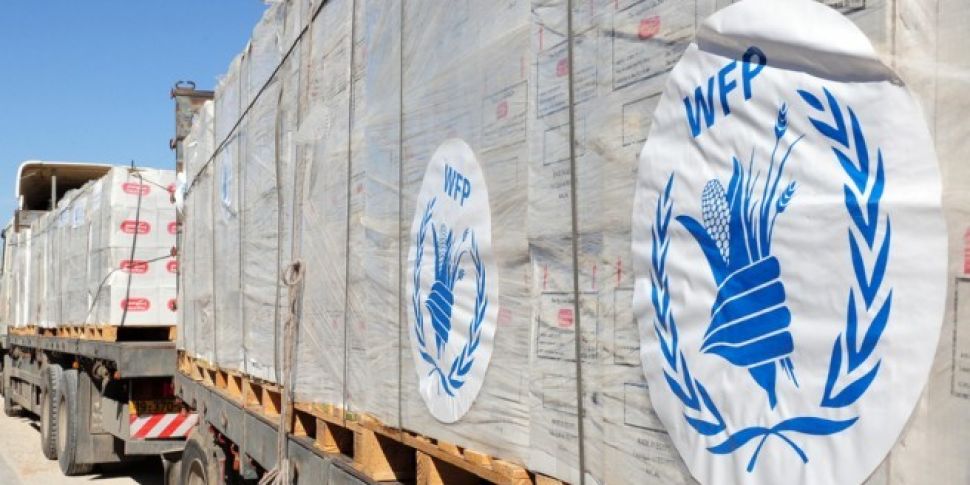On any given day, World Food Programme (WFP) has 5,000 trucks, 20 ships and 70 planes on the move, delivering food and other assistance to those in need in some of the most poverty-stricken countries in the world.
The image of a WFP stamped sack of food is synonymous with humanitarian efforts to end hunger. Their food-aid programme has developed from its admirable beginnings in the 1960s, which saw the WFP bring help to earthquake victims in Iran and set up its first school feeding project in Togo to now; the WFP has become the first UN aid organisation to offer cash assistance via mobile phones as part of their food assistance programme that empowers people to feed themselves.
Each year, the WFP distributes approximately 12.6 billion rations, helping 80 million people in over 80 countries worldwide last year alone. A complex organisation of over 14,000 employees (its internal company structure rivals that of the biggest tech giants), WFP prides itself on its esteemed reputation as an emergency responder that gets the job done quickly at scale, even in the most difficult environments.
In places where food is available but unaffordable, they give vulnerable people vouchers or prepaid cards to buy nutritious ingredients. These cash-based transfers give people more choice, protect them from financial exploitation, and supports the local economy - the WFP aims for zero world hunger by 2030, and provides the in depth help needed to reach this goal.
To put it simply, WFP will support countries in ensuring no one is left behind
Responding to emergencies and saving lives and livelihoods – either through direct assistance, or by strengthening country capacities – remains at the heart of WFP’s operations, especially as humanitarian needs become increasingly complex and protracted.
If you thought that food aid and assistance is the only thing WFP do, you’ll soon discover that’s only the tip of their humanitarian iceberg: they also focus on emergency assistance, relief and rehabilitation, development aid and special operations. In fact, two-thirds of their work is in conflict-affected countries where people are three times more likely to be undernourished than those living in countries without conflict.
In emergencies, WFP is often first on the scene, providing food assistance to the victims of war, civil conflict, drought, floods, earthquakes, hurricanes, crop failures and natural disasters. When the emergency subsides, WFP helps communities rebuild shattered lives and livelihoods. They also work to strengthen the resilience of people and communities affected by crises with a range of support programmes, such as providing advice, building communications centres, and training government staff.
The sad fact that the first 1,000 days of a child’s life - from conception to the age of two - determines a child’s destiny, inspired the WFP to focus on mother and child nutrition
Children who are malnourished in their first 1,000 days of life may suffer cognitive and physical impairment, while in times of war or disaster, schools are the first to close.
WFP development projects focus on nutrition, especially for mothers and children, addressing malnutrition from the earliest stages through programmes targeting the first 1,000 days from conception to a child’s second birthday, and later through school meals.
WFP is now the largest humanitarian organisation implementing school feeding programmes worldwide and has been doing so for over 50 years. Each year, WFP provides school meals to between 20 and 25 million children across 63 countries, often in the hardest-to-reach areas.
WFP believe that gender equality is a prerequisite for a world of zero hunger
Eliminating inequalities between women and men farmers would increase agricultural production by 2.5 to 4 percent in developing countries, which translates to a 12 to 17 percent reduction in global hunger, or 100 to 150 million fewer hungry people.
Over the last 20 years, gender policies at WFP have evolved from a women-centred approach to focus on gender equality. Their current policy underlines the need for equal representation in every household and society, and includes the objectives of equal participation by men and women in nutrition programmes, as well as promoting decision making by women and girls in the community.
So, what’s next for the World Food Programme? Even though there are 216 million fewer hungry people than in 1990-92 than there are now, there’s still a long way to go.
Funded entirely by voluntary donations, in 2016 WFP raised US$5.9 billion, but is relying on governments, citizens, civil society organisations and the private sector to come together with them to achieve the main goal: zero world hunger by 2030.
Their lifesaving work is 100% voluntarily funded, and all support will help save lives, not just today, but year-round and wherever the need is greatest. The secret to ending world hunger? It starts with WFP.









